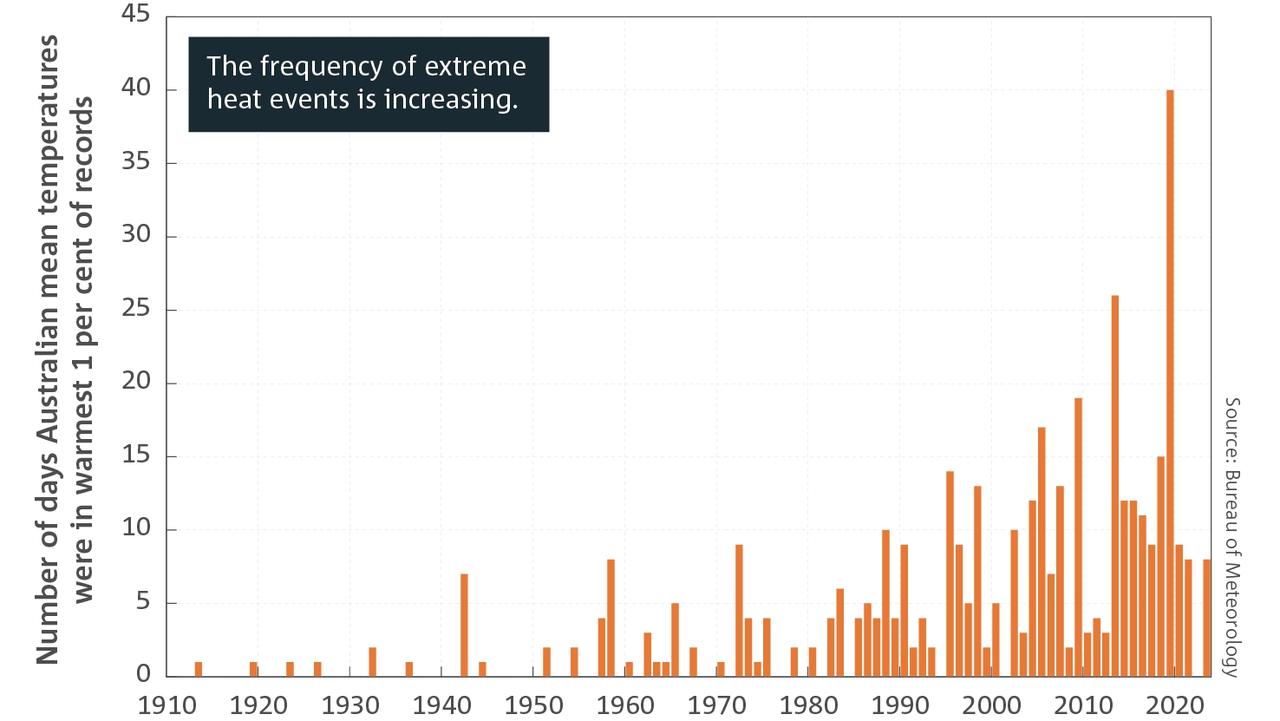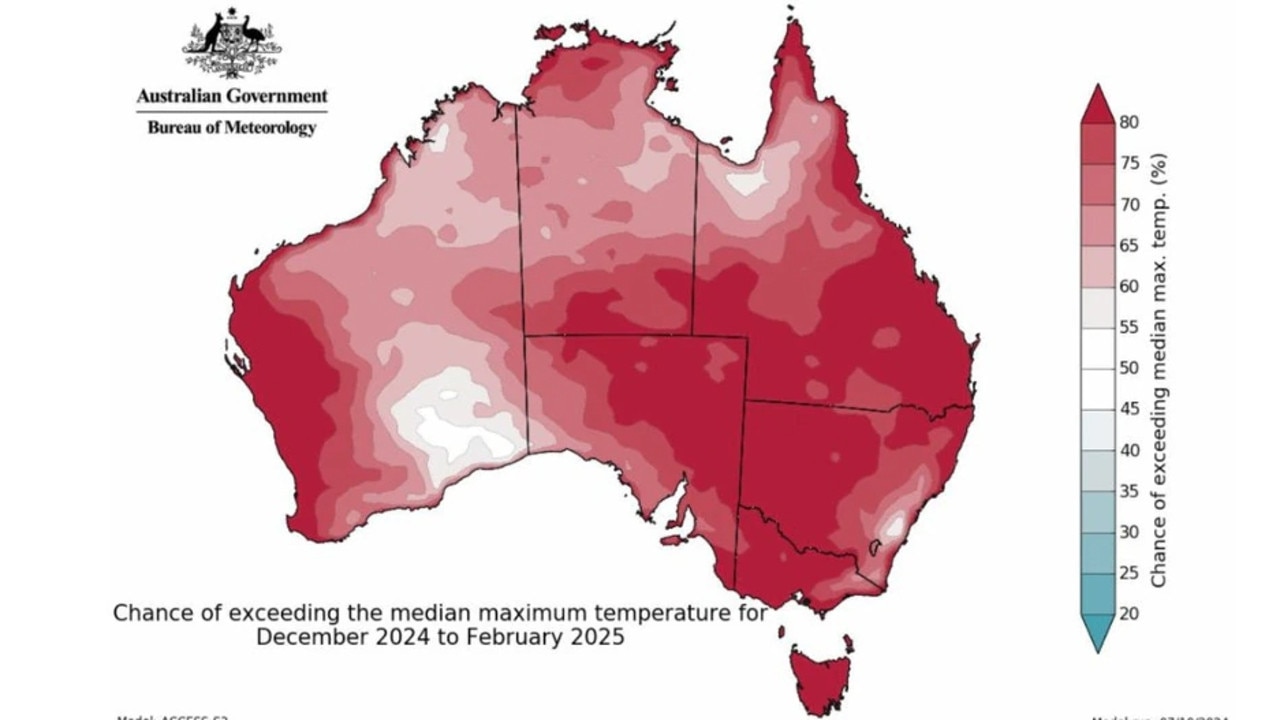Crime-ate change: Shock link between rising temperatures and rising crime rates
As temperatures continue to soar, a sobering study has found climate change will be responsible for 72,000 additional crimes a year in Australia.
Australia will have to contend with an additional 1.64m crimes created by climate change over the course of the rest of the century, an alarming study has found.
Researchers Sefa Awaworyi Churchill, Russell Smyth, and Trong-Anh Trinh came to the staggering conclusion after matching weather data with crime rates over an 18-year period.
Their paper ‘Crime, Weather, and Climate Change in Australia’ found that increasing extreme heat events in Australia will generate an additional 72,000 crimes per year.
If emissions continue to rise as predicted, those yearly increases will amount to approximately 1.64m additional crimes throughout the rest of the 21st century.

Lead author Professor Churchill said the findings were “concerning”.
“An increase of this magnitude suggests that climate change has a tangible impact not only on the environment but also on societal stability and individual behaviour,” he said.
“Further, it indicates that climate change can create a substantial strain on law enforcement and public safety resources.”
Professor Churchill and his co-authors found an increase in the number of days when the temperature was above 30 degrees was associated with a higher crime rate.
The findings are consistent with an international body of research that links increases in temperature with increasing violent behaviour.
The “heat hypothesis” – as it’s called in criminology – states that hot weather generates a physiological response that causes aggressive behaviour and leads to violent crime.
A study published in 2022 analysed data from 171 countries over a decade and found a positive association between increasing temperatures and rates of homicide.

As hot days become more frequent in Australia, Professor Churchill and his co-authors estimate an additional 8000 operational police officers per year will be needed to mitigate the corresponding crime surge.
“Increased crime carries substantial economic costs, including law enforcement expenditures, judicial processing, incarceration and lost productivity,” Professor Churchill said.
“These costs are in addition to the economic burdens directly associated with climate change, such as disaster recovery and infrastructure repair.”
The authors suggested the cost of rising crime rates was likely to fall disproportionately on lower socio-economic communities, who are less able to distance themselves from the heat and its effects.
Professor Churchill said additional funding and policing could help combat a rise in crime, but warned there is a need to be cautious about “the potential effects of over-policing and the likelihood of criminalisation of poverty” in such neighbourhoods.

Professor Churchill said the staggering estimate of 1.64m additional crimes shows the impacts of climate change are “cumulative and long term”.
“Without mitigation and adaptation measures, the trend could worsen as the century progresses,” he said.
The warning comes as Australia is in the midst of one of its hottest summers on record, with bushfires raging on both sides of the country.
It’s a trend that’s expected to continue in coming decades, with research by CSIRO and the Bureau of Meteorology showing hot days are set to become hotter and more frequent.
The grim outlook means an equally grim rise in crimes across the country, but Professor Churchill advised it’s not too late to act.
“While concerning, this estimate also provides an opportunity to plan and act decisively to mitigate the multifaceted impacts of climate change, including its effects on crime,” he said.
The federal Labor government has committed to reducing climate pollution by 43 per cent from 2005 levels in 2030. Meanwhile, the Coalition government has promised to scrap the target if they are elected to government at the upcoming election.
Climate organizations have argued neither approach is sufficient and both must do more to limit global warming and halt the disastrous impacts of irreversible climate change.
The federal government has been criticised for approving seven new coal mine projects in 2023 and 2024 in spite of its commitments to reducing emissions.
Fossil fuels – coal, oil and gas – are by far the largest contributor to global climate change, accounting for over 75 percent of global greenhouse gas emissions and nearly 90 percent of all carbon dioxide emissions.
Yet Australia had made major strides in the last decade, with 40 per cent of the national electricity grid now powered by solar, wind, and hydro power.



